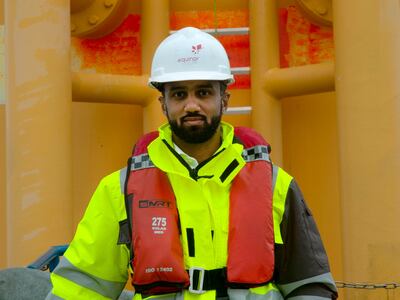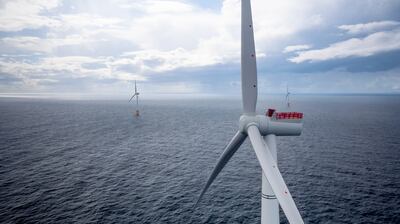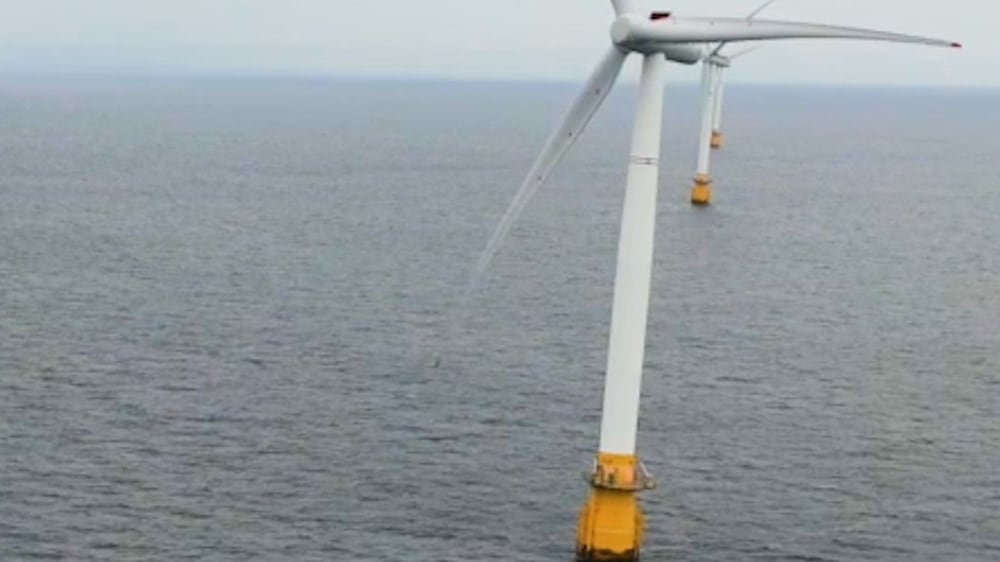When the world’s first commercial floating windfarm successfully harnessed the destructive winds off the Scottish coast, the world paid little attention to the extraordinary feat of engineering.
Four years on, with stacks of valuable data collected from the sensors that cover the giant turbines in the North Sea and their 75-metre blades, the breakthrough technology has been vindicated. Sceptics who said the Hywind Scotland project was too expensive have fallen away and suppliers are showing interest in an approach that once appeared to have a narrow path to profit.
Hywind consists of five giant windmills that stand above the waves 25 kilometres out to sea from the Scottish fishing port of Peterhead. Already it has proved to be the UK’s most productive offshore wind operation and costs for the notoriously expensive technology have tumbled. Now its success is set to be replicated on a bigger scale around the world with companies vying for a slice of the action.
Its leading role in floating offshore wind generation projects has blazed a trail for other mega projects, including one under development in France. Asian nations – led by South Korea, China and Taiwan – are expected to challenge for global leadership.
Husain Al Meer, the general manager, UK for Masdar, said that Hywind Scotland had proved to be a game changer in the development of offshore renewable energy. He said the company was keen to remain at the forefront of floating wind technology.
“We have this international vision to help countries to explore new ways of generating electricity and … to help them with their green agenda,” he said.
“We have over 1GW of offshore wind farms in UK that powers almost one million UK homes and displaces about two million tonnes of CO2 a year, which is the equivalent of removing about 420,000 cars from the roads.”
Hywind Scotland – a joint enterprise between Norwegian company Equinor and Masdar, the UAE renewable energy group – creates enough energy to power 22,000 homes from the turbines, which are tethered to the sea floor with three mooring chains.
But its main value has been to prove to governments and sceptical suppliers that floating turbines can harness the strongest winds that blow many kilometres offshore of many countries.

“It was hard to get attention and now it’s completely different,” said Sonja Chirico Indrebo, the head of floating offshore wind at Equinor. “It [Hywind Scotland] has been operational for four years and has a fantastic track record.”
Scotland currently has the largest installed capacity of floating offshore wind in the world with the 30 megawatt Hywind project being joined by a newly installed 50MW farm off the coast of Aberdeen to the south.
The UK government has set a target of one gigawatt (1GW or 1,000 MW) of power generation from floating offshore wind by 2030 – but the industry is clamouring for more ambitious targets.
An industry report published on Wednesday suggested that a £2.2 billion ($3.03 billion) investment by the UK government could lead to a return of £43bn and create more than 29,000 jobs by 2050.
Offshore wind – driving floating turbines and the more common versions fixed to the sea floor – accounted for 12 per cent of UK power generation in the first quarter of 2021.
But the independent body that advises the UK government suggests that floating offshore windfarms will need to generate a vastly greater amount – about 50GW – for the country to deliver its legally binding commitment of net zero carbon emissions by 2050.
Dan McGrail, chief executive of trade association Renewable UK, said: “Floating wind is advancing so quickly that the government’s 1GW target is no longer a world-leading ambition, but a fraction of what we could develop in the UK over the next decade.”
Onshore windfarms at the moment produce more power than those at sea, according to UK government figures, but the balance is changing. Turbines onshore are smaller than those at sea and restricted by planning regulations and local opposition to what some consider eyesores.
Out at sea, the turbines are growing as the technology improves, allowing them to generate more power and exploit the stronger and more consistent winds offshore.
But the bigger turbines bring their own problems. They are harder to build and maintain. Hywind Scotland was built in Norway because only its fjords were deep enough to construct the submerged floater on which the turbine is built.
Theoretically, the floating designs are easier to tow back to port for repairs, rather than needing a support vessel. But the commercial case for floating windfarms has yet to be proven at large scale and few ports are in a position to carry out such work in the UK.
“Offshore wind is the future of wind and also the only way, combined with solar, that a lot of European governments are going to get anywhere near their renewable targets,” said Mark Barges, an analyst in Paris for business consultants Ashurst. “It’s the only show in town that delivers in volume.”
The vast majority of offshore windfarms currently in operation are fixed to the ocean floor and rely on shallow waters of less than 60 metres. Hywind has helped to open up the possibilities of deeper water operations – a key concern for authorities in places such as California and off the coast of Japan where only floating turbines are feasible.
Technical issues remain, including protecting the underwater cabling required to bring power to land before feeding into national power grids.
The industry is also yet to settle on the best and most efficient floating platforms for the turbines – the portion that is partly submerged beneath the waves – with dozens of different versions being trialled adding to costs of development.
Mr McGrail told a floating offshore wind conference in Aberdeen on Wednesday that the UK needed to develop its ports that are primarily designed for fishing and offshore gas and oil to service the emerging industry. Leases for areas of the ocean floor for floating windfarms need to be issued more quickly he said.

But the handful of companies that once competed for such licences has turned into a crowd, experts say, enabling the Scottish authorities to seek new sites for development.
“The last two to three years have seen a significant change,” said Luiz Gonzales-Pinto, the Taiwan manager for OWC, an offshore wind consultancy. “Almost all the developers are looking at floating wind.
“I think it’s going to be really big because floating wind allows for installations to operate in any coastal region in the world.”
One estimate from analysts GlobalData suggests a potential 7,000GW in Europe, US and Japan for floating offshore power generation – a vast increase from total offshore global power generation of 34GW in 2020.
In Scotland, the devolved government has swiftly tapped into the growing demand – increasing the cost of its licences tenfold and actively seeking new sites for exploitation.
But the question remains whether the comparatively high costs can continue to fall to match the scale of the ambition demanded of the technology to tackle the climate crisis and help replace traditional oil and gas power generation. Equinor believes that floating wind can become profitable by 2030, when it could potentially power 12 million homes in Europe.
The UK, which also has the largest offshore wind farm in the world off the coast of Yorkshire, announced this week that it was ring-fencing £24 million of £265 million in renewable energy subsidies for floating offshore windfarm projects.







